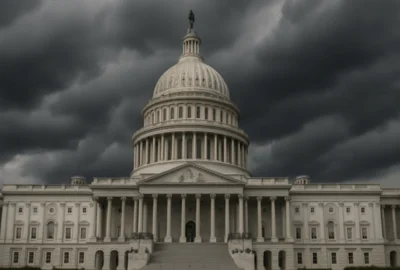Thousands of spectators at four EM sites witnessed day turn to night as they stood in the path of totality of the historic solar eclipse on Aug. 21.
For EM’s Oak Ridge Site in Tennessee, the event was especially significant, marking the first major public event at the East Tennessee Technology Park (ETTP), a former uranium enrichment site EM began cleaning up in 1989.
EM and its cleanup contractor, URS | CH2M Oak Ridge, worked with the Community Reuse Organization of East Tennessee and the National Park Service (NPS) to enable the “All-American Total Solar Eclipse" public viewing event at ETTP.
About 1,000 people attended the NPS affair symbolizing ETTP’s transition from a restricted government facility to a multi-use industrial park. EM is scheduled to complete cleanup there in the early 2020s, and the site will be home to more new businesses, historic landmarks, and conservation lands.
Employees at the Savannah River Site (SRS) in South Carolina filed outside of work to enjoy the eclipse. The site was 99.9 percent in totality and one of the last locations in the U.S. to view the rare solar phenomenon.
Drew Fairchild, a flowsheet engineer with SRS liquid-waste contractor Savannah River Remediation (SRR), said he appreciated observing the first coast-to-coast eclipse in the U.S. in 99 years with coworkers.
“Seeing a solar eclipse alongside other liquid-waste peers provided a rare team-building experience," Fairchild said.
Carol Hunter, an SRR principal safety and health specialist, was glad she witnessed the once-in-a-lifetime event.
“I was thankful to be able to view such an amazing sight," she said. “The next eclipse is so far in the future that none of us know if we will have this opportunity again."
Kaitlyn Haupfear, an SRR field procurement engineer, said viewing the eclipse was indescribable.
“It was great to see so many people in our nation stop to share such a beautiful moment together," Haupfear said. “What made the event even better was that I was able to share the experience with my coworkers and my dad, who is also an SRR employee."
People from around the world traveled to Idaho to experience the historic happening, and DOE’s Idaho National Laboratory - an EM cleanup site - was closed that day to accommodate traffic.
Idaho Cleanup Project contractor Fluor Idaho shifted its work schedule that week for 1,800 EM workers from Monday-Thursday to Tuesday-Friday to reduce traffic, anticipating hundreds of thousands of people for the eclipse viewing in Idaho Falls, a city of about 60,000 people.
DOE Idaho employee Mark Brown said such planning helped ensure safety for eclipse viewers.
"Aside from the spectacular image of the moon crossing the sun’s face and the incredible, surreal environmental changes that are part of a total solar eclipse, it was reassuring that the planning and preparation for this event ensured an incident-free day," Brown said. “It was a rare event to see and experience, and something that I and my family will never forget."
Source: U.S. Dept. of Energy, Office of Environmental Management









